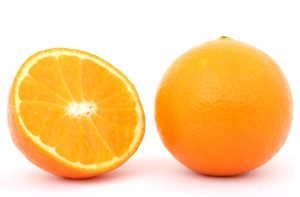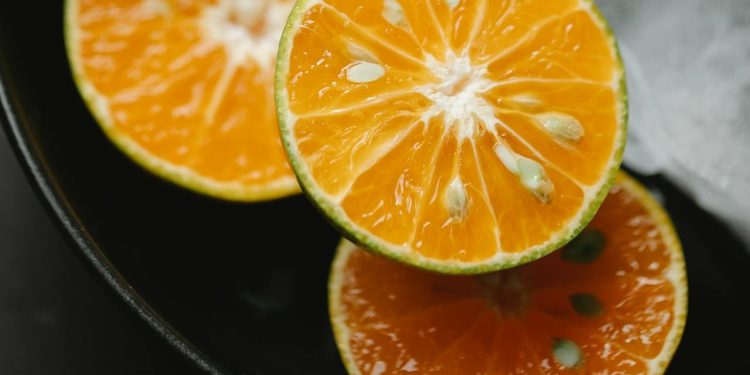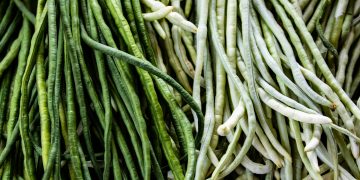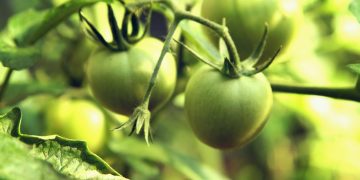Oranges are not only delicious but also packed with essential nutrients like vitamin C, making them a popular and healthy snack. However, determining the freshness of an orange is crucial to avoid consuming a spoiled fruit. In this guide, we'll explore the importance of identifying bad oranges and introduce six effective methods to help you determine if an orange is no longer suitable for consumption.
6 Ways to Tell if an Orange Is Bad

Visual Inspection
- Skin Color and Texture
One of the initial indicators of an orange's freshness is its skin color and texture. A ripe and healthy orange typically exhibits a vibrant orange hue with a smooth texture. If you notice a dull or discolored appearance, it may be a sign that the orange is past its prime.
- Mold or Unusual Spots
Look at the surface of the orange for any signs of mold or unusual spots. Mold growth can occur both on the skin and beneath it, leading to a musty smell and an off-putting appearance. Discard any orange showing visible signs of mold, as consuming mold can pose health risks.
- General Appearance
Take a moment to observe the overall appearance of the orange. A fresh orange should feel plump, indicating juiciness. If it looks shrunken or wrinkled, it may have started to dry out and lose its flavor.
Also Read: Radish vs Beet: Health Benefits, Impact, and Nutrition Values
Check the Smell

- Fresh Citrus Fragrance
A good orange emits a fresh, citrusy fragrance. Bring the orange close to your nose and inhale. The presence of a sweet and tangy aroma suggests that the orange is still in good condition.
- Off-Putting Odors
Conversely, a bad orange may release unpleasant odors. If you detect any foul or fermented smells, it's a clear indication that the orange has begun to spoil. Trust your sense of smell to differentiate between a fresh and a deteriorating orange.
- The Sniff Test
To further assess the orange's condition, perform the sniff test by squeezing it gently. A ripe orange should release a burst of citrus aroma. If there's a lack of fragrance or if it smells off, it's best to avoid consuming the fruit.
Also Read: Are Watermelon and Tomato Companion Plants? [Detailed Guide]
Texture and Firmness

- Firmness
Evaluate the firmness of the orange by gently squeezing it. A fresh and ripe orange should yield slightly to pressure but still feel firm. If it feels overly soft or mushy, it may have surpassed its prime and could be starting to spoil.
- Consistency
Consistency in texture is another key factor. A good orange should have uniform firmness throughout. Inconsistencies, such as soft spots or variations in firmness, can indicate spoilage.
- Indentations and Wrinkles
Examine the surface for any indentations or wrinkles. While minor imperfections are normal, excessive wrinkling or deep indentations may suggest that the orange is dehydrated and past its peak freshness.
Also Read: Bell Peppers Growing Stages: From Seed to Harvest
Mold and Visual Defects

- Mold Growth
Mold is a common sign of spoilage in oranges. If you notice fuzzy or discolored patches on the skin or visible signs of mold when peeling the orange, it's best to discard it immediately.
- Blemishes and Spots
Apart from mold, check for blemishes and spots on the orange's skin. While small imperfections are natural, large, discolored, or sunken areas may indicate deterioration.
- Punctures and Damage
Inspect the orange for any punctures or damages to the skin. These openings can provide an entry point for bacteria and accelerate the spoiling process. If you find significant damage, it's advisable to discard the orange.
Taste Test
- Ideal Orange Flavor
Ultimately, the most reliable test for an orange's freshness is the taste test. A fresh and healthy orange should deliver a burst of sweet and tangy flavors, characteristic of ripe citrus fruit.
- Off or Bitter Flavors
If the orange tastes off, bitter, or lacks its usual sweetness, it's a clear sign that it has deteriorated. Trust your taste buds to determine whether the orange is still enjoyable or if it's time to find a fresher one.
- Texture Matters
Pay attention to the texture as you bite into the orange. A good orange should have a juicy and succulent texture. If it feels dry, mealy, or lacks juiciness, it may have passed its prime.
Also Read: Plum vs Pluot: Key Differences Unveiled!
Consider Storage Conditions

- Temperature
Proper storage plays a crucial role in maintaining the freshness of oranges. Keep them in a cool and dry place, away from direct sunlight. Avoid exposing them to extreme temperatures, as this can accelerate the spoiling process.
- Humidity
Oranges thrive in a moderately humid environment. Excessive humidity can lead to mold growth, while overly dry conditions can cause the fruit to dry out. Find a balance to preserve the orange's quality.
- Air Circulation
Ensure proper air circulation around the stored oranges. Good ventilation helps prevent the accumulation of moisture, reducing the risk of mold and extending the shelf life of the fruit.
- Separation from Ethylene-Producing Foods
Oranges are sensitive to ethylene, a natural gas produced by certain fruits and vegetables. Store them separately from ethylene-producing foods, such as apples and bananas, to prevent premature ripening and spoilage.
Also Read: Jalapeno Plant Stages: Step by Step From Seed to Harvest
Conclusion
In conclusion, identifying bad oranges is crucial to ensure that you enjoy the best taste and nutritional benefits. Visual inspection, checking the smell, assessing texture and firmness, examining for mold and visual defects, conducting a taste test, and considering storage conditions are all effective methods to determine an orange's freshness. By incorporating these practices into your routine, you can confidently select and enjoy oranges at their peak, avoiding any unpleasant experiences associated with any spoiled fruit.
























